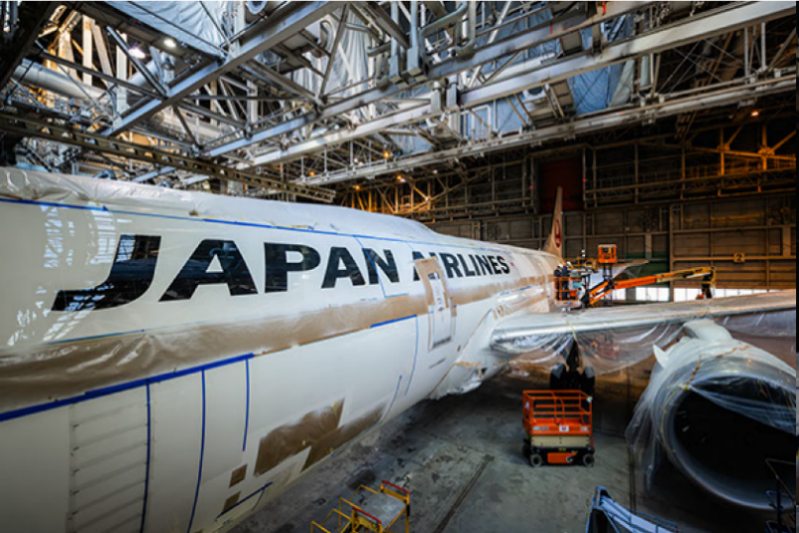In a pioneering move towards sustainable aviation, Japan Airlines (JAL) has unveiled the world’s first aircraft featuring a large-scale application of riblet coating on international routes.
The announcement, made jointly with the Japan Aerospace Exploration Agency (JAXA) and O-Well Corporation on January 10, 2025, marks a significant advancement in fuel efficiency technology for the commercial aviation industry.
The innovative riblet coating, inspired by the drag-reducing properties of shark skin, has been applied to the majority of a JAL Boeing 787-9 aircraft (registered JA868J). This is the first time such a coating has been used on an aircraft designated for international routes, with the inaugural flight scheduled for mid-January 2025.
Riblets are micro-grooves that, when applied to an aircraft’s surface, reduce aerodynamic drag. This particular application utilizes the “Paint-to-Paint Method,” a technique developed and refined by O-Well and JAXA.
Unlike traditional riblet applications using films or decals, this method applies the riblet shapes directly to the paint film, promising improved durability and reduced weight.

JAL, JAXA, and O-Well have been collaborating on this technology since 2022.
The application of the riblet coating to the Boeing 787-9 follows successful durability tests on a domestic JAL Boeing 737-800 and subsequent tests confirming fuel efficiency improvements when applied to a large area of the aircraft’s fuselage bottom.
Wind tunnel tests and numerical analyses conducted by JAXA have further validated the drag reduction effect on international aircraft equivalent to the Boeing 787-9.
O-Well has developed a riblet coating system capable of accommodating larger aircraft, allowing for the expansion of the application area to the upper fuselage.
According to the joint release, the riblet coating on the Boeing 787-9 is projected to reduce drag during cruising by 0.24%. This seemingly small reduction translates to an estimated annual fuel saving of approximately 119 tons and a reduction of about 381 tons of CO2 emissions.
The partners will continue to work together to validate the durability, aesthetics, and fuel efficiency improvement effects of the large-scale riblet coating on long-haul international flights.
Further development and wider application of this technology could play a crucial role in the aviation industry’s ongoing efforts to reduce its environmental footprint.
























Leave a comment